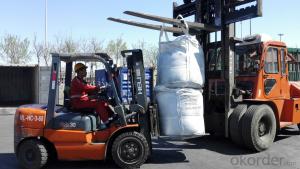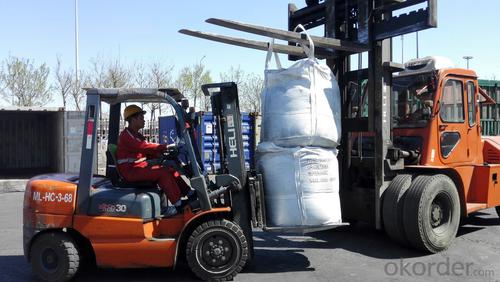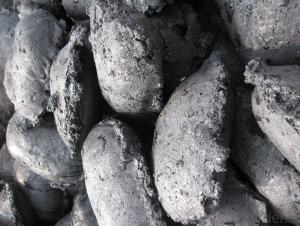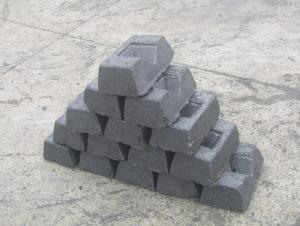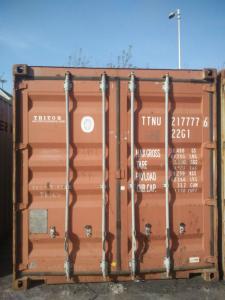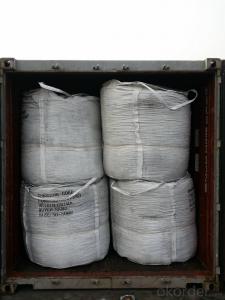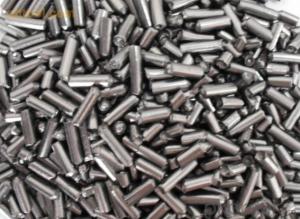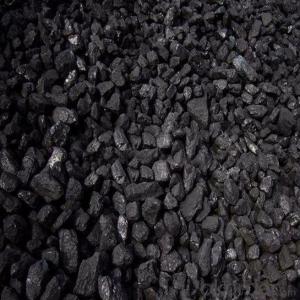S0.5% Recarburizer with VM 1%max for steel making
- Loading Port:
- Tianjin
- Payment Terms:
- TT OR LC
- Min Order Qty:
- 20.2
- Supply Capability:
- 1002 m.t./month
OKorder Service Pledge
OKorder Financial Service
You Might Also Like
Introduction:
Calcined anthracite can be called carbon additive, carbon raiser, recarburizer, injection coke, charging coke, gas calcined anthracite.
Best quality Anthracite as raw materials through high temperature calcined at over 2000℃ by the DC electric calciner with results in eliminating the moisture and volatile matter from Anthracite efficiently, It is playing more and more important role in the industry.improving the density and the electric conductivity and strengthening the mechanical strength and anti-oxidation. It has good characteristics with low ash, low resistivity, low sulphur, high carbon and high density. It is the best material for high quality carbon products. It is used as carbon additive in steel industry or fuel.
Features:
G-High Calcined Anthracite is produced when Anthracite is calcined under the temperature of 1240°C in vertical shaft furnaces. G-High Calcined Anthracite is mainly used in electric steel ovens, water filtering, rust removal in shipbuilding and production of carbon material.
Specifications:
F.C.% | 95MIN | 94MIN | 93MIN | 92MIN | 90MIN | 85MIN | 84MIN |
ASH % | 4MAX | 5MAX | 6 MAX | 6.5MAX | 8.5MAX | 12MAX | 13MAX |
V.M.% | 1 MAX | 1MAX | 1.0MAX | 1.5MAX | 1.5MAX | 3 MAX | 3 MAX |
SULFUR % | 0.3MAX | 0.3MAX | 0.3MAX | 0.35MAX | 0.35MAX | 0.5MAX | 0.5MAX |
MOISTURE % | 0.5MAX | 0.5MAX | 0.5MAX | 0.5MAX | 0.5MAX | 1MAX | 1MAX |
Pictures
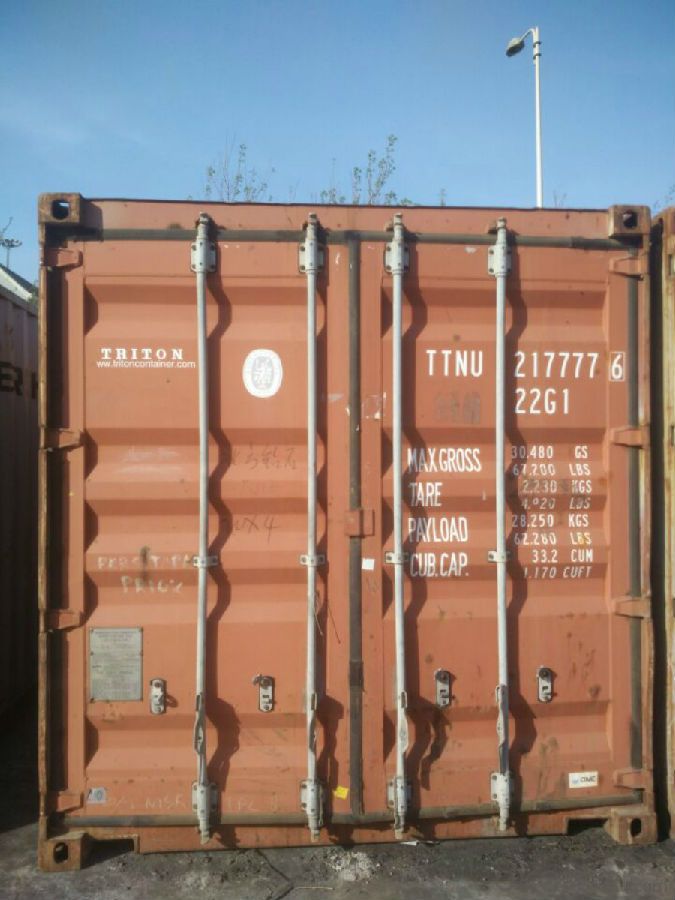
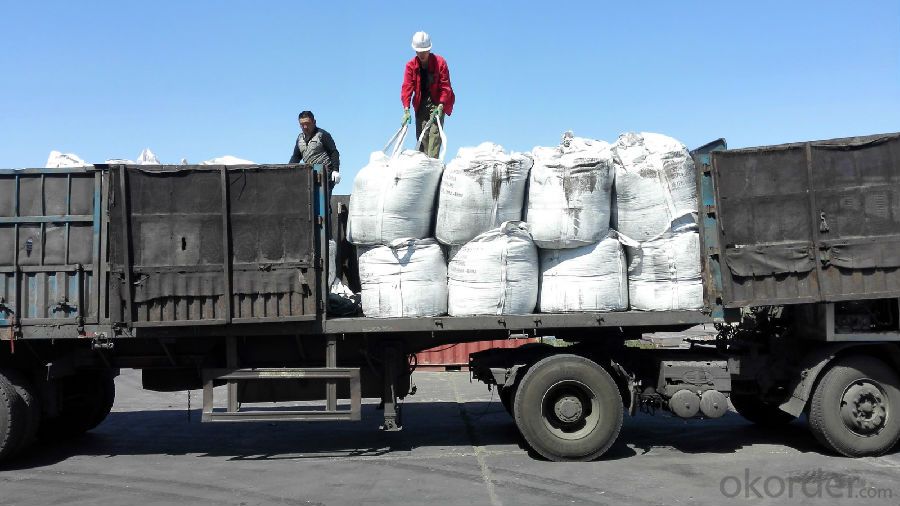
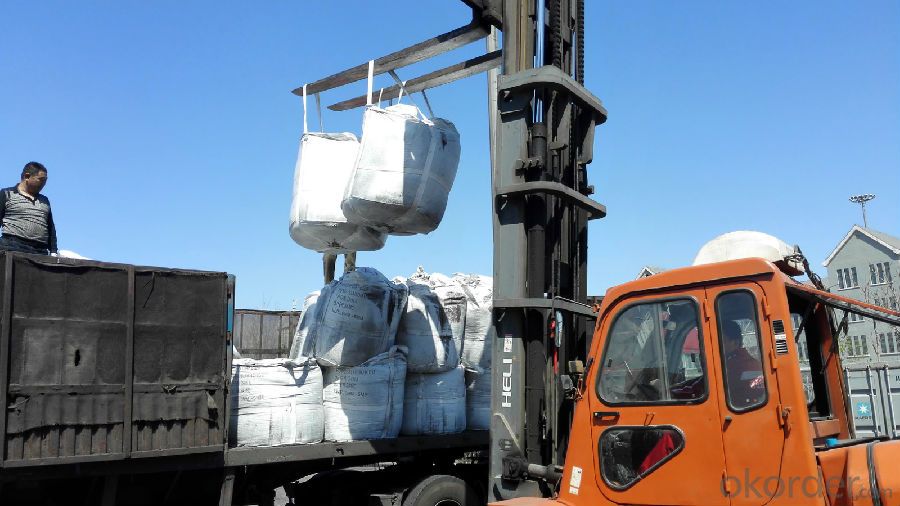
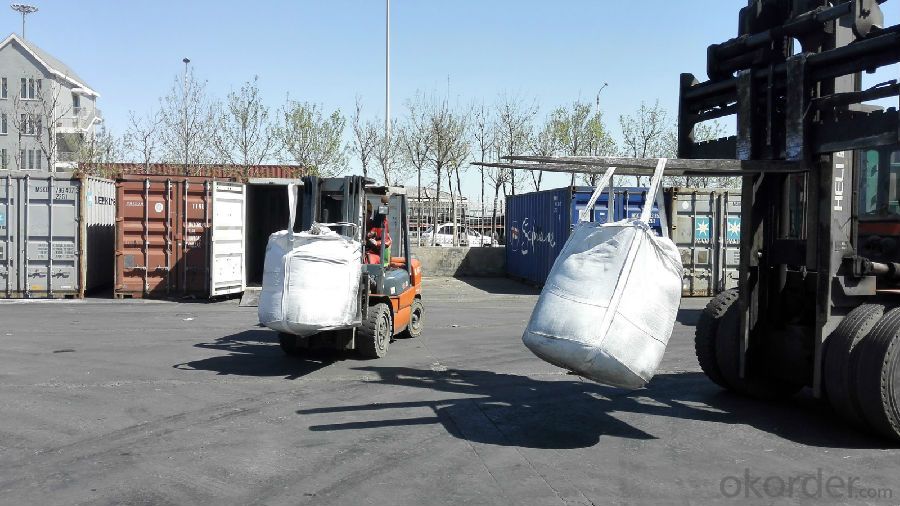
FAQ:
Packing:
(1). Waterproof jumbo bags: 800kgs~1100kgs/ bag according to different grain sizes;
(2). Waterproof PP woven bags / Paper bags: 5kg / 7.5kg / 12.5kg / 20kg / 25kg / 30kg / 50kg small bags;
(3). Small bags into jumbo bags: waterproof PP woven bags / paper bags in 800kg ~1100kg jumbo bags.
Payment terms
20% down payment and 80% against copy of B/L.
Workable LC at sight,
- Q: How does carbon form?speed
- How is coal formed?Coal is known as black gold, the food industry, it is one of the main energy use of the human world since eighteenth Century. Although its important position has been replaced by oil, but in the future for a long period of time, due to the exhaustion of petroleum, inevitable decline, but because of the huge reserves of coal, and the rapid development of science and technology, the new technology of coal gasification is becoming more mature and widely used, coal will become one of the production and life of human beings in an irreplaceable energy.Coal is millions of years of plant leaves and roots, stacked on the ground with a layer of very thick black humus, due to changes in the earth's crust constantly buried underground, long isolated from the air and under high temperature and pressure, after a series of complex physical and chemical changes and other factors, the formation of black however, this fossil, is the coal forming process.The thickness of coal seam in a coal mine and the crust drop speed and accumulation amount of plant remains. The crust decreased rapidly, the plant remains piled thick, the coal seam is thick, on the other hand, the crust decline slowly, the accumulation of plant remains thin, the mine coal seam is thin. The tectonic movement of the crust to the original level of coal seam folds and faults occur, some underground coal seam buried deeper, and squeezed to the surface, even above the ground, more likely to be found. There are some relatively thin coal seam, and the area is not large, so there is no value related to the formation of coal mining, so far not find the update statement.
- Q: What is carbon neutral certification?
- Carbon neutral certification is a recognition given to individuals, organizations, or products that have successfully reduced their carbon footprint to zero by balancing their greenhouse gas emissions with an equivalent amount of carbon offsets or renewable energy. It signifies a commitment to mitigating the negative environmental impact and contributing to a more sustainable future.
- Q: What are the limitations of carbon dating?
- Carbon dating, also known as radiocarbon dating, is widely used to determine the age of organic materials up to 50,000 years old. Despite its significant contributions to archaeology and paleontology, researchers must be aware of its limitations. One limitation is the inability of carbon dating to accurately date materials beyond the 50,000-year mark. This is because the isotope carbon-14, used in carbon dating, has a half-life of only 5,730 years. Consequently, after multiple half-lives, there is insufficient carbon-14 remaining in a sample to determine its age accurately. Another limitation is the reliance on organic material. Carbon dating can only be applied to organic materials like bones, shells, wood, and charcoal. It is not applicable to inorganic materials such as rocks or minerals. Additionally, the presence of contaminants like humic acids or carbonates can distort the carbon dating results. Furthermore, carbon dating is limited in that it provides only a relative age for the sample. It establishes the ratio of carbon-14 to carbon-12 in the sample and compares it to the known ratio in the atmosphere. By assuming that this ratio has remained constant over time, an estimate of the sample's age can be made. However, variations in atmospheric carbon-14 levels over time can affect the accuracy of this method. Moreover, carbon dating can be influenced by nuclear testing and other human activities that release significant amounts of carbon-14 into the atmosphere. This phenomenon, known as the "bomb effect," can lead to artificially younger dates for samples collected after the mid-20th century. Lastly, the size and condition of the sample can limit the accuracy of carbon dating. Sufficient organic material is required for analysis to obtain precise results. This poses challenges when dealing with small or degraded samples, as the carbon-14 content may be insufficient or contaminated. In conclusion, while carbon dating is a valuable tool for determining the age of organic materials, it has limitations. Researchers must consider these limitations and exercise caution when interpreting the results, taking into account factors such as the age range, sample type, presence of contaminants, atmospheric variations, and sample size.
- Q: How can I see if a battery can be used to recharge it?Can not all carbon batteries charge?
- Maybe you'll ask why you don't unify the voltages of these batteries to 1.5V, you know, from the raw batteries we learned in high schoolThe battery positive electrode and the negative electrode potential (i.e. voltage) is determined by a positive electrode and a negative electrode material and whether the charge is determined by using the different electrolyte electrolyte battery two materials also need to be adjusted accordingly
- Q: What are the effects of carbon emissions on the stability of estuaries?
- Carbon emissions have significant effects on the stability of estuaries. Estuaries are highly productive and diverse ecosystems that serve as a crucial habitat for numerous species, including fish, birds, and other wildlife. However, excessive carbon emissions, primarily in the form of carbon dioxide (CO2), contribute to climate change and ocean acidification, which in turn have detrimental effects on estuaries. One of the most prominent effects of carbon emissions on estuaries is the rise in sea levels. As global temperatures increase due to carbon emissions, glaciers and ice caps melt, leading to a rise in sea levels. Estuaries, being low-lying areas where rivers meet the sea, are particularly vulnerable to this sea-level rise. Higher water levels can result in increased flooding, erosion, and saltwater intrusion into freshwater systems within estuaries, impacting the overall stability of these ecosystems. Moreover, the increased concentration of CO2 in the atmosphere leads to ocean acidification. When CO2 dissolves in seawater, it reacts with water to form carbonic acid, which lowers the pH of the water. This acidification has detrimental effects on the marine life within estuaries, including shellfish, oysters, and other organisms with calcium carbonate shells. The acidity makes it more difficult for these organisms to build and maintain their shells, leading to reduced populations and biodiversity within estuaries. Additionally, climate change caused by carbon emissions alters the temperature and precipitation patterns in estuaries, affecting the balance of salinity and freshwater influx. Estuaries rely on a delicate balance of saltwater and freshwater to support their unique ecosystems. Changes in temperature and precipitation can disrupt this balance, leading to significant shifts in species composition and distribution. Some species may struggle to adapt to these changes, while invasive species may thrive, further altering the stability and integrity of estuarine ecosystems. Overall, the effects of carbon emissions on the stability of estuaries are profound and multifaceted. Rising sea levels, ocean acidification, and climate-induced changes in salinity and freshwater availability all contribute to the degradation of estuaries and the loss of biodiversity. It is crucial to reduce carbon emissions and mitigate climate change to protect and preserve these vital ecosystems for future generations.
- Q: How is carbon used in the production of paints and pigments?
- Carbon is widely used in the production of paints and pigments due to its unique properties and versatility. One of the primary ways carbon is utilized is through the production of carbon black. Carbon black is a fine powder made from the incomplete combustion of hydrocarbons, such as coal tar, petroleum, or natural gas. It is extensively used as a pigment in various types of paints, inks, and coatings. The dark color of carbon black makes it a popular choice for providing intense black pigmentation in paints and pigments. It is highly stable and resistant to fading, which ensures that the color remains vibrant over time. Additionally, carbon black has excellent opacity, allowing it to cover other colors effectively and create a solid base for further pigmentation. Carbon black also enhances the durability and performance of paints and coatings. It acts as a reinforcing agent, improving the mechanical properties of the final product. It increases the strength, toughness, and resistance to abrasion, making the paint or coating more long-lasting and resistant to wear and tear. Furthermore, carbon black is an electrically conductive material. This property makes it a valuable component in a wide range of specialty coatings, including anti-static coatings and electromagnetic shielding coatings. These coatings are used in various industries, such as electronics, automotive, and aerospace, where electrical conductivity or protection against electromagnetic interference is critical. Apart from carbon black, other forms of carbon, such as graphite and carbon nanotubes, are also used in the production of specialized paints and pigments. Graphite is commonly used in high-performance coatings due to its lubricating properties and resistance to extreme temperatures. Carbon nanotubes, on the other hand, offer unique optical, electrical, and mechanical properties, making them suitable for advanced coatings and pigments in various applications. In summary, carbon plays a crucial role in the production of paints and pigments by providing intense black pigmentation, enhancing durability, and offering unique properties for specialized coatings. Its versatility makes it a valuable ingredient in the paint and pigment industry, ensuring the production of high-quality, long-lasting, and visually appealing products.
- Q: What are the properties of carbon-based textiles?
- Carbon-based textiles offer several distinct advantages in different applications. To begin with, they demonstrate exceptional strength and durability. Renowned for their high tensile strength, carbon-based textiles can resist stretching and tearing, enabling them to withstand harsh conditions and maintain their integrity over time. Moreover, these textiles possess excellent thermal conductivity, efficiently managing heat. This quality proves beneficial in industries like aerospace, automotive, and electronics, where effective heat dissipation is crucial to prevent system failures. Additionally, carbon textiles exhibit remarkable resistance to chemical corrosion, remaining structurally intact even when exposed to various chemicals, acids, and solvents. This resistance makes them ideal for applications in the chemical industry, where contact with corrosive substances is common. Another notable attribute of carbon textiles is their inherent flame resistance. They possess a high resistance to ignition and do not easily propagate flames. Consequently, they find use in environments where fire safety is paramount, such as protective clothing for firefighters and military personnel. Furthermore, carbon-based textiles display good electrical conductivity, making them suitable for electronics and electrical engineering applications. They effectively conduct electricity and dissipate static charges, reducing the risk of electrical malfunctions or damage. Lastly, carbon textiles have a low coefficient of thermal expansion, meaning they undergo minimal expansion or contraction with temperature changes. This property ensures their dimensional stability, guaranteeing that they maintain their shape and size under varying thermal conditions. In conclusion, carbon-based textiles possess a combination of strength, durability, thermal conductivity, chemical resistance, flame resistance, electrical conductivity, and dimensional stability. These properties render them highly versatile and suitable for a wide range of applications across various industries.
- Q: Is the hardness or softness of the steel with higher carbon content?
- With the increase of carbon content, the strength and hardness of steel increase, while the plasticity and toughness decrease. When the carbon content is more than 1%, the strength of steel decreases.
- Q: What are the effects of carbon emissions on the stability of the atmosphere?
- The stability of the atmosphere is significantly affected by carbon emissions, resulting in various consequences. One primary effect is the intensification of the greenhouse effect, which leads to global warming and climate change. Human activities emit carbon dioxide (CO2), the main greenhouse gas, which traps heat in the atmosphere and prevents it from escaping into space. Consequently, the Earth's average temperature rises, causing a range of negative impacts. One consequence of carbon emissions is the alteration of weather patterns. Increased atmospheric temperatures can result in more frequent and severe heatwaves, droughts, and wildfires. Conversely, it can also lead to heavier rainfall and more frequent and intense storms, such as hurricanes and cyclones. These changes disrupt ecosystems, agriculture, and water availability, posing risks to human health, food security, and infrastructure. Another result of carbon emissions is the melting of polar ice caps and glaciers. As the atmosphere warms, ice sheets in Antarctica and Greenland melt, contributing to rising sea levels. This poses a significant threat to coastal regions, increasing the risk of flooding, erosion, and the loss of valuable ecosystems. The displacement of coastal communities and the loss of land also create social and economic challenges. Additionally, carbon emissions contribute to ocean acidification. When seawater absorbs CO2, it reacts with water molecules and forms carbonic acid, lowering the ocean's pH and making it more acidic. This acidity harms marine life, particularly coral reefs and organisms dependent on calcium carbonate for their shells and skeletons. The degradation of coral reefs not only affects marine biodiversity but also impacts the livelihoods of communities dependent on fisheries and tourism. Furthermore, carbon emissions trigger feedback loops that further impact the stability of the atmosphere. For example, as the Earth warms, permafrost in the Arctic regions begins to thaw, releasing significant amounts of methane, another potent greenhouse gas. This release of additional greenhouse gases amplifies global warming, creating a harmful cycle. In conclusion, carbon emissions have far-reaching effects on the stability of the atmosphere. They contribute to global warming, alter weather patterns, cause the melting of ice caps, acidify the oceans, and trigger feedback loops. It is crucial to address carbon emissions through sustainable practices, renewable energy sources, and international cooperation to mitigate these effects and ensure a stable and livable atmosphere for future generations.
- Q: How can Dungeon Fighter Online's superior furnace rock carbon be obtained?
- Bought in cash. You can go to the mall to have a look.
Send your message to us
S0.5% Recarburizer with VM 1%max for steel making
- Loading Port:
- Tianjin
- Payment Terms:
- TT OR LC
- Min Order Qty:
- 20.2
- Supply Capability:
- 1002 m.t./month
OKorder Service Pledge
OKorder Financial Service
Similar products
Hot products
Hot Searches
